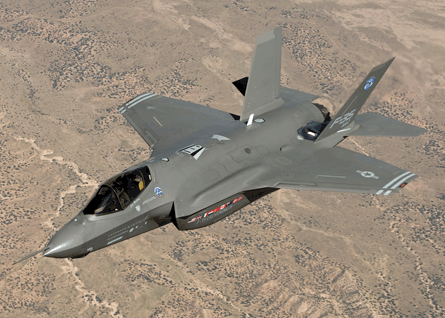Lockheed Martin executives have held initial discussions with Japanese government and defence ministry officials about building an in-country final assembly facility for the F-35 Joint Strike Fighter.
Sources close to Lockheed and the Japanese government say the proposal is similar to the final assembly and check out facility offered to Italy, and would fulfil Tokyo's wish to have a domestic production capability to support its indigenous industry as part of a next-generation F-X fighter procurement.
 |
|---|
© Lockheed MartinFinal assembly of the F-35 planned for Japan |
While the discussions have been put on hold until after Japan's 30 August general elections, those involved remain confident that they will be able to resume talks even if there is a change of government.
An assembly deal with Japan would need the agreement of the USA's other partners on the JSF programme, who have workshare on the fighter. Lockheed officials believe they can persuade the nations that a large Japanese order would bring down the aircraft's unit cost.
The primary contractor in Japan is likely to be Mitsubishi Heavy Industries, which already works with Lockheed on the F-2 fighter. It is not certain if Japan would want its companies to manufacture parts for domestic F-35s, but industry sources say this is likely to be a more contentious issue among other JSF partners.
Alenia Aeronautica will operate Italy's F-35 final assembly facility at Cameri air base under Lockheed's control, with the site likely to be capable of completing two aircraft per month.
Major sections of the airframe, systems and avionics will arrive from partner companies, with Alenia producing the wings. Italian personnel will also apply low radar cross-section coatings at Cameri and conduct flight-test and delivery activities.
Production will run until around 2022, with the Netherlands' F-35s also likely to be assembled in Italy. The facility is also planned to become a long-term maintenance, repair, overhaul and upgrade facility for European operators of the JSF, and a similar model could apply to the Japanese factory, the sources say.
While Japan is still keen on the Lockheed F-22 Raptor, its chances of getting the stealth fighter continue to dim. The US Congress has barred the F-22's export for several years due to its highly sensitive technology, and the Pentagon has continued to rebuff Tokyo's requests for information on the fighter.
And on 21 July the US Senate acceded to President Barack Obama's wishes and ended funding for the F-22 at the 187 aircraft that the US Air Force has ordered. Lockheed's chief financial officer Bruce Tanner is now pessimistic about the F-22's export prospects. "I'm not particularly positive on the ability for us to make [an F-22 export deal] happen in the next few years," he says.
This could finally force Japan to turn its eyes to the F-35. Although Tokyo is not a member of the JSF programme, it is a potentially lucrative customer, due to its large budget and requirements. Japan has said that it wants to buy 50 fighters as part of its F-X requirement to replace its McDonnell Douglas F-4s.
Apart from the F-22 and F-35, Tokyo has also asked for information on Boeing's F-15SE and F/A-18E/F Super Hornet, and the Eurofighter Typhoon. It could choose one of these as an interim solution if there are delays to the F-35.
Source: Flight International
















